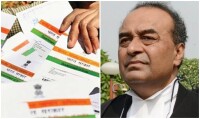LAIHRI PHAGLU Review of Chambers and Office of Mr. Muk...
#salute
#salute
Supreme Court of India came into existence on 26th January, 1950 and is located on Tilak Marg, New Delhi. On the 28th of January, 1950, two days after India became a Sovereign Democratic Republic, the Supreme Court came into being. The inauguration took place in the Chamber of Princes in the Parliament building which also housed India's Parliament, consisting of the Council of States and the House of the People. It was here, in this Chamber of Princes, that the Federal Court of India had sat for 12 years between 1937 and 1950. This was to be the home of the Supreme Court for years that were to follow until the Supreme Court acquired its own present premises.
The inaugural proceedings were simple but impressive.
Taking care to ensure that the Rules of the Supreme Court were published and the names of all the Advocates and agents of the Federal Court were brought on the rolls of the Supreme Court, the inaugural proceedings were over and put under part of the record of the Supreme Court.
After its inauguration on January 28, 1950, the Supreme Court commenced its sittings in a part of the Parliament House. The Court moved into the present building in 1958. The building is shaped to project the image of scales of justice. The Central Wing of the building is the Centre Beam of the Scales. In 1979, two New Wings - the East Wing and the West Wing - were added to the complex. In all there are 15 Court Rooms in the various wings of the building. The Chief Justice's Court is the largest of the Courts located in the Centre of the Central Wing.
The original Constitution of 1950 envisaged a Supreme Court with a Chief Justice and 7 puisne Judges - leaving it to Parliament to increase this number. In the early years, all the Judges of the Supreme Court sat together to hear the cases presented before them.
We Supreme Court Judges retire upon attaining the age of 65 years. In order to be appointed as a Judge of the Supreme Court, a person must be a citizen of India and must have been, for atleast five years, a Judge of a High Court or of two or more such Courts in succession, or an Advocate of a High Court or of two or more such Courts in succession for at least 10 years or he must be, in the opinion of the President, a distinguished jurist. Provisions exist for the appointment of a Judge of a High Court as an Ad-hoc Judge of the Supreme Court and for retired Judges of the Supreme Court or High Courts to sit and act as Judges of that Court.
The Constitution seeks to ensure the independence of Supreme Court Judges in various ways. A Judge of the Supreme Court cannot be removed from office except by an order of the President passed after an address in each House of Parliament supported by a majority of the total membership of that House and by a majority of not less than two-thirds of members present and voting, and presented to the President in the same Session for such removal on the ground of proved misbehaviour or incapacity. A person who has been a Judge of the Supreme Court is debarred from practising in any court of law or before any other authority in India.
The proceedings of the Supreme Court are conducted in English only. Supreme Court Rules, 1966 are framed under Article 145 of the Constitution to regulate the practice and procedure of the Supreme Court.

Comments: